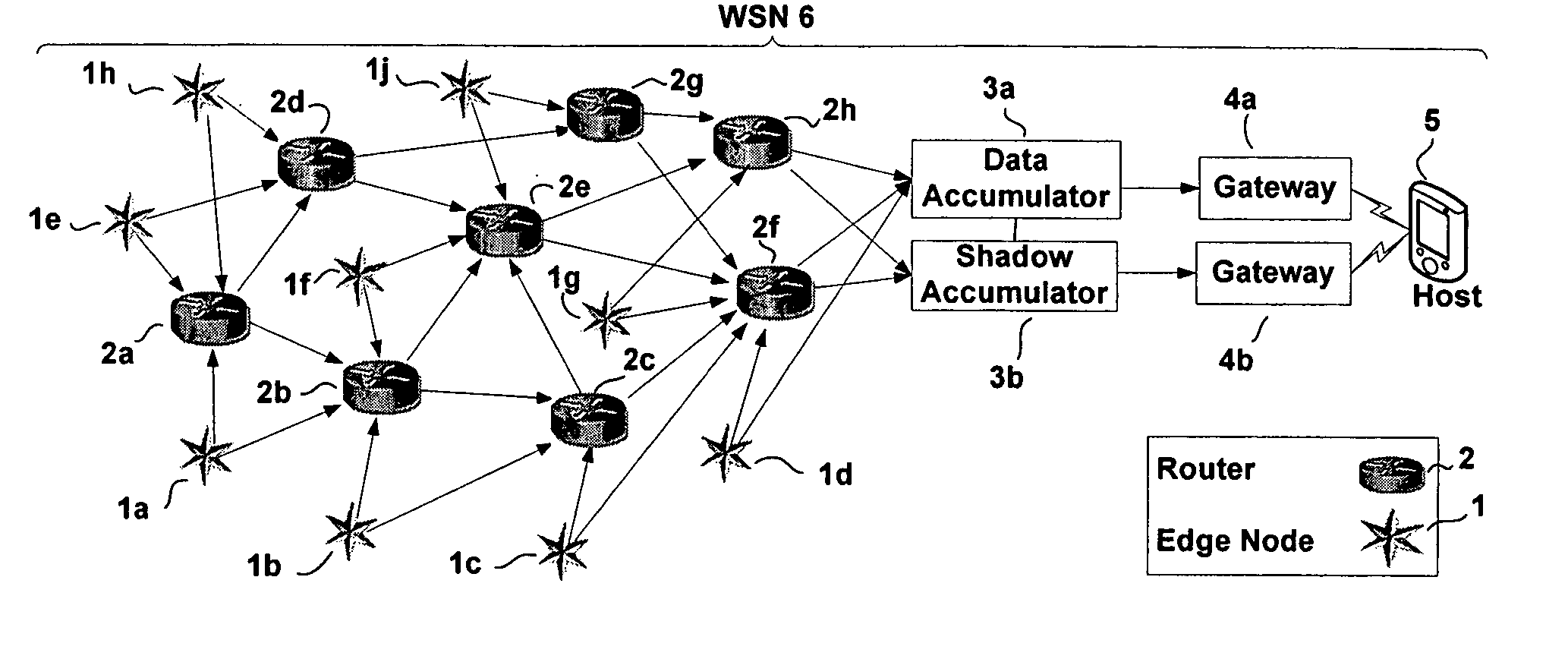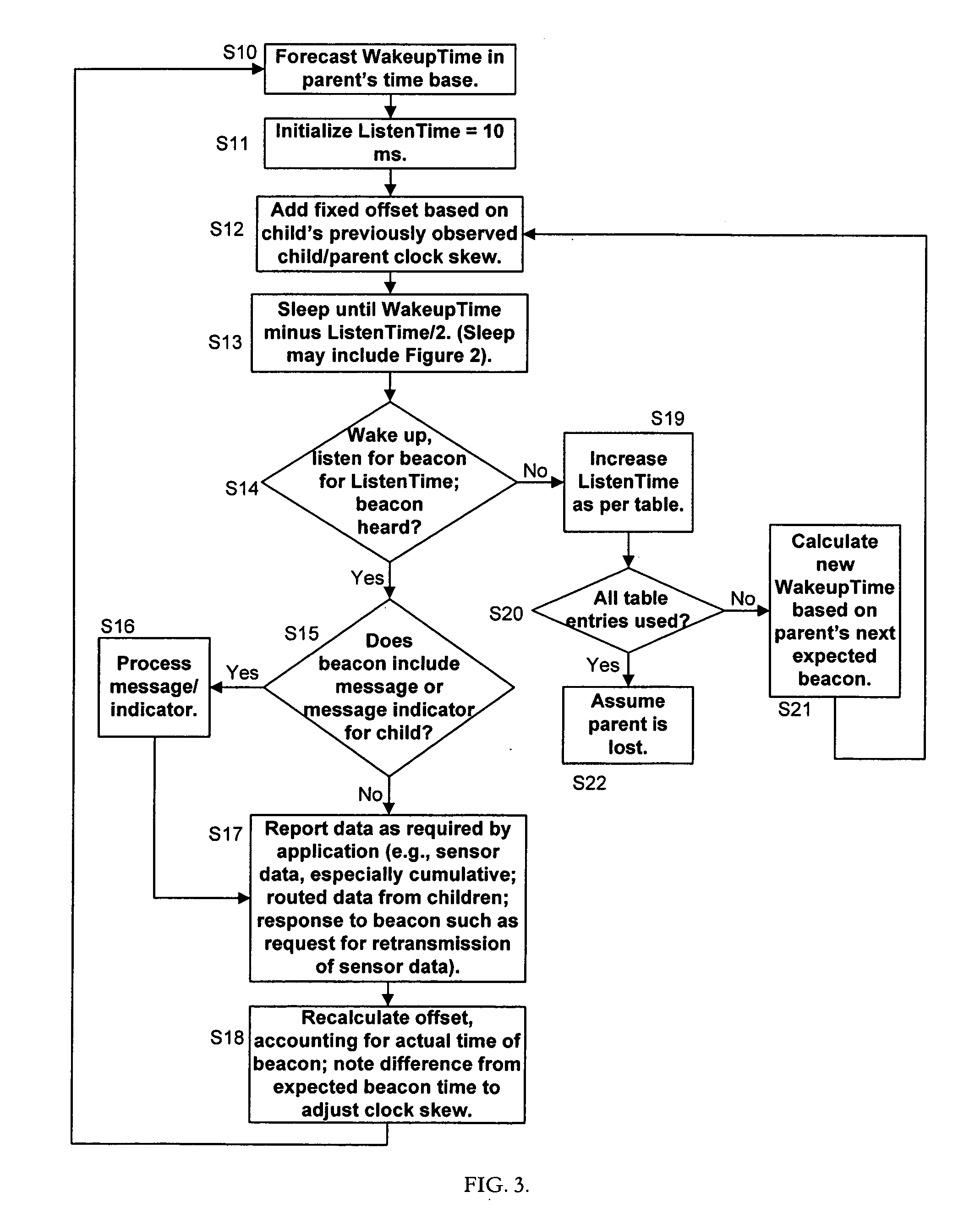Method for reporting and accumulating data in a wireless communication network
a wireless communication network and wireless communication technology, applied in data switching networks, frequency-division multiplexes, instruments, etc., can solve problems such as affecting the operation of a timer and the ability of devices to coordinate communication,
- Summary
- Abstract
- Description
- Claims
- Application Information
AI Technical Summary
Benefits of technology
Problems solved by technology
Method used
Image
Examples
Embodiment Construction
[0025] Aspects of the invention are described below with reference to illustrative embodiments. However, it should be understood that aspects of the invention are not limited to those embodiments described below, but instead may be used in any suitable system or arrangement.
[0026] Aspects of the invention are described in relation to a wireless sensor communication network (WSN) 6, in which routing and non-routing devices may be combined into a mesh or hierarchical structure, as shown, for example, in the illustrative embodiment of FIG. 1.
[0027] As shown in FIG. 1, WSN 6 components may include: [0028] Edge Nodes. Edge Nodes 1 may include small, battery-powered wireless radio transceivers that may provide low-bandwidth wireless connectivity for attached devices such as sensors (e.g., temperature, humidity, power or fuel consumption) and actuators (e.g., fans, LEDs, switches). Within the mesh or hierarchical structure of a WSN 6, Edge Nodes 1 may have parent nodes through which the ...
PUM
 Login to View More
Login to View More Abstract
Description
Claims
Application Information
 Login to View More
Login to View More - R&D
- Intellectual Property
- Life Sciences
- Materials
- Tech Scout
- Unparalleled Data Quality
- Higher Quality Content
- 60% Fewer Hallucinations
Browse by: Latest US Patents, China's latest patents, Technical Efficacy Thesaurus, Application Domain, Technology Topic, Popular Technical Reports.
© 2025 PatSnap. All rights reserved.Legal|Privacy policy|Modern Slavery Act Transparency Statement|Sitemap|About US| Contact US: help@patsnap.com



